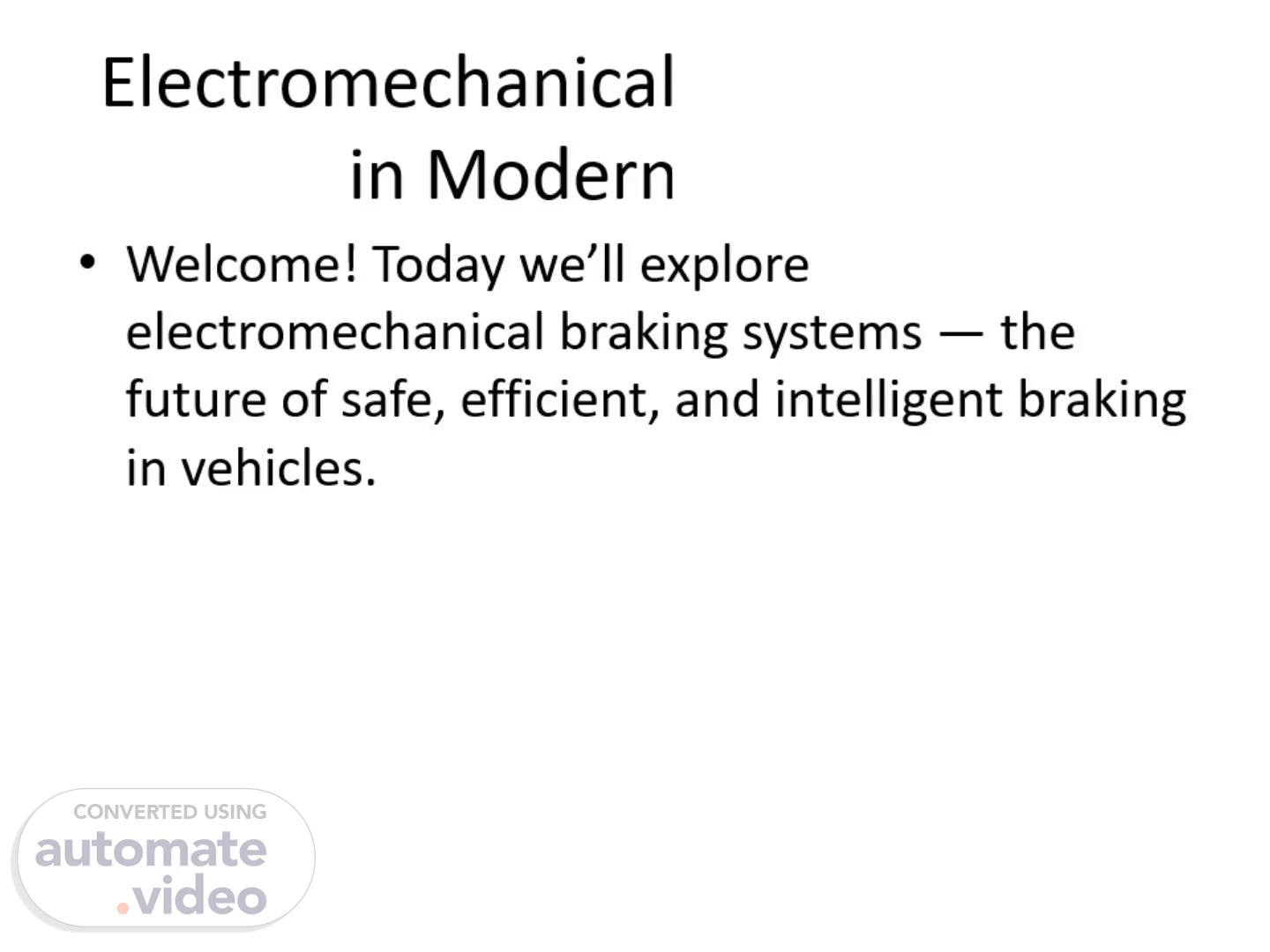Scene 1 (0s)
Electromechanical Braking Systems in Modern Vehicles.
Scene 2 (10s)
The Hook. Imagine driving at 120 km/h. You press the brake pedal… and within seconds, your car slows down safely. For decades, this was thanks to hydraulics. But now, braking is entering a new era — electronics and magnetism..
Scene 3 (25s)
Why Braking Matters. Braking is not just about slowing down — it’s about safety. Without reliable brakes, speed is useless. Engineers constantly innovate braking systems to make them faster, safer, and more reliable..
Scene 4 (38s)
Evolution of Braking. From wooden blocks, to drum brakes, to disc brakes and hydraulics. Hydraulics improved power and safety, but leaks, complexity, and slower response demanded innovation..
Scene 5 (50s)
What is Electromechanical Braking?. Electromechanical braking replaces hydraulic fluid with electrical signals. Instead of fluid, pedal input is converted to an electronic signal activating motors or magnets..
Scene 6 (1m 2s)
Types of Systems. 1. Electromechanical Actuator Brakes – electric motor presses brake pad against disc. 2. Electromagnetic Brakes – magnetic field slows disc by creating resistance..
Scene 7 (1m 13s)
How Does It Work?. 1. Pedal input sensed 2. ECU calculates braking force 3. Actuators or magnets apply the brakes 4. Sensors provide feedback All in milliseconds, faster than hydraulics..
Scene 8 (1m 26s)
Advantages. • Faster response • Precise control • No fluid = less maintenance • Perfect for EVs • Works with regenerative braking • Lighter and efficient.
Scene 9 (1m 35s)
Challenges. • Higher cost • Power dependency • Complex electronics • Heat management issues.
Scene 10 (1m 42s)
Applications. • Electric & hybrid cars (Tesla, Mercedes, BMW) • High-speed trains • Aircraft systems • Robotics & industrial machines.
Scene 11 (1m 51s)
Future Outlook. Braking is going digital. Autonomous vehicles need instant, precise braking. Electromechanical systems, combined with AI and regenerative braking, will dominate future transport..
Scene 12 (2m 3s)
Conclusion. Electromechanical braking combines mechanics, electronics, and magnetism to create faster, safer, and more efficient systems. This is the braking technology of the future..
